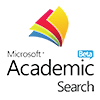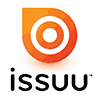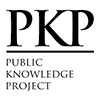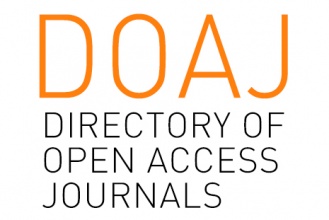Technology Integration in Teaching English to Young Learners: Challenges and Strategies
Abstract
This study explores the integration of technology in teaching English to Young Learners (EYL) at Mataram University Language Support Unit. This research examines the types of technology utilized, challenges encountered, and strategies adopted to enhance the learning experience. A qualitative approach was employed, using semi-structured interviews and focus group discussions (FGD) with eight EYL tutors to gather in-depth data. The results reveal that tools such as Quizizz, Live Worksheets, WhatsApp, and YouTube are frequently integrated into teaching. While these tools enhance engagement and learning, challenges such as unstable internet connections and unequal access to gadgets persist. Tutors mitigate these challenges by preparing alternative materials and encouraging collaborative learning. The findings suggest that technology integration in EYL classrooms significantly supports student engagement and language acquisition, but a balanced language approach with traditional methods is necessary to address limitations. This study provides practical insights for educators to optimize technology use in early language learning contexts.
Keywords
Full Text:
PDFReferences
Alizadeh, M. (2016). The Impact of Motivation on English Language Learning. International Journal of Research in English Education, 1(1), 11–15.
Aloraini, S. (2012). The impact of using multimedia on students’ academic achievement in the College of Education at King Saud University. Journal of King Saud University - Languages and Translation, 24(2), 75–82. https://doi.org/10.1016/j.jksult.2012.05.002.
Arya, A., & Nardon, L. (2014). Google It: Critical Thinking and Problem Solving in the Internet Age. 16th International Conference on Education and New Learning Technologies, 4166–4173.
Blake, & Robert J. (2013). Brave New Digital Classroom: Technology and Foreign Language Learning (Second Edition). Georgetown University press.
Cameron, L. (2001). Teaching Languages to Young Learners. Cambridge University Press. https://doi.org/10.1017/CBO9780511733109.
Deci, E. L., & Ryan, R. M. (2000). The “What” and “Why” of Goal Pursuits: Human Needs and the Self-Determination of Behavior. Psychological Inquiry, 11(4), 227–268. https://doi.org/10.1207/S15327965PLI1104_01.
Deterding, S., Dixon, D., Khaled, R., & Nacke, L. (2011). From game design elements to gamefulness. Proceedings of the 15th International Academic MindTrek Conference: Envisioning Future Media Environments, 9–15. https://doi.org/10.1145/2181037.2181040.
Dudeney, G., &Hockey, N. (2007). How to Teach English with Technology (2nd ed.)? Pearson Education.
Dunn, A., & Dunn, K. J. (1993). Teaching Secondary Students Through Their Individual Learning Styles: Practical Approaches for Grades 7 - 12 (1st ed.). Pearson.
Eady, M., & Lockyer, L. (2013). Tools for learning: technology and teaching strategies. In Learning to Teach in The Primary School. Cambridge University Press.
Fitria, H., & Suminah. (2020). Role of Teachers in Digital Instructional Era. Journal of Social Work and Science Education, 1(1), 70–77. https://www.google.com/url?sa=t&source=web&rct=j&opi=89978449&url=https://ejournal.karinosseff.org/index.php/jswse/article/download/11/11&ved=2ahUKEwjxwt_T7deGAxVHwzgGHRaTAvwQFnoECDQQAQ&usg=AOvVaw2KMDcfm7uMytl_jy8CrJTp.
Gai Mali, Y. C., Kurniawan, D., Januardi, J. I., Swara, S. J., Lokollo, N. C. E., Picauly, I. A., Paramitha, N. G., Tanore, J. A., Dewani, M. S., & Pakiding, R. W. (2023). Issues and Challenges of Technology Use in Indonesian Schools: Implications for Teaching and Learning. IJIET (International Journal of Indonesian Education and Teaching), 7(2), 221–233. https://doi.org/10.24071/ijiet.v7i2.6310.
Garrison, D. R., & Kanuka, H. (2004). Blended learning: Uncovering its transformative potential in higher education. The Internet and Higher Education, 7(2), 95–105. https://doi.org/10.1016/j.iheduc.2004.02.001.
Gilakjani, A. P. (2017). A Review of the Literature on the Integration of Technology into the Learning and Teaching of English Language Skills. International Journal of English Linguistics, 7(5), 95. https://doi.org/10.5539/ijel.v7n5p95.
Hendriks, D. (2016). Comparing traditional and digital learning methods to improve the learning outcomes of young children [Tilburg University]. https://www.google.com/url?sa=t&source=web&rct=j&opi=89978449&url=https://arno.uvt.nl/show.cgi%3Ffid%3D141012&ved=2ahUKEwi_otux8NeGAxXf_aACHRacCZQ4ChAWegQIEBAB&usg=AOvVaw2MWhBRLY0j4ZSEQwEZjH7I.
Holec, H. (1981). Autonomy and Foreign Language Learning. Pergamon Press.
Jonassen, D. H. (1994). Thinking Technology: Toward a Constructivist Design Model. Educational Technology, 34(4), 34–37.
Kessler, G. (2018). Technology and the future of language teaching. Foreign Language Annals, 51(1), 205–218. https://doi.org/10.1111/flan.12318.
Kırkgöz, Y. (2019). Fostering young learners’ listening and speaking skills. Routledge Handbook of Teaching English to Young Learners, 171–187.
Kusumaningrum, S. R., Widiati, U., Anwar, K., Farisia, H., Malang, U. N., Sunan, U., & Surabaya, A. (2022). Integrating The Technology in Teaching and Learning Process Through Digital Media Creation as A Way to Improve Indonesian EYL Teachers’ Competence. Information Systems Education Journal, 9(7), 3–14. http://journal.um.ac.id/index.php/jptpp/.
Liu, C.-C., Wang, P.-C., & Tai, S.-J. D. (2016). An analysis of student engagement patterns in language learning facilitated by Web 2.0 technologies. ReCALL, 28(2), 104–122. https://doi.org/10.1017/S095834401600001X.
Liu, X., & Moeller, A. J. (2019). Promoting Learner Engagement through Interactive Digital Tools. http://digitalcommons.unl.edu/teachlearnfacpubhttp://digitalcommons.unl.edu/teachlearnfacpub/310.
Mayer, R. (2014). The Cambridge Handbook of Multimedia Learning (R. E. Mayer, Ed.). Cambridge University Press. https://doi.org/10.1017/CBO9781139547369.
Mayer, R. E. (2009). Multimedia Learning. Cambridge University Press. https://doi.org/10.1017/CBO9780511811678.
Mo, A. (2024). The Role of Digital Pedagogy in Enhancing Teacher Education. Research Article, 1. https://doi.org/10.19080/OAJELS.2024.33.555565.
Muntean, C. (2011). Raising Engagement in E-learning Through Gamification. 6th International Conference on Virtual Learning ICVL, 323–329.
Noviza, O. (2019). Critical Thinking and Technology in Young Children: Do We Really Need Technology to Help Children Improve Critical Thinking? Proceeding of The International Conference of Early Childhood Education, 51–54.
Packy Laverty, J., Morris University David Wood, R., & Morris University John Turcheck, R. (2011). More technology, Less Learning? Information Systems Education Journal, 9(7), 4–13. www.aitp-edsig.org.
Panagiotidis, P. (2018). Technology as a Motivational Factor in Foreign Language Learning. European Journal of Education, 1(3), 43. https://doi.org/10.26417/ejed.v1i3.p43-52.
Paquette, K. R., & Rieg, S. A. (2008). Using Music to Support the Literacy Development of Young English Language Learners. Early Childhood Education Journal, 36(3), 227–232. https://doi.org/10.1007/s10643-008-0277-9.
Piaget, J., & Inhelder, B. (1969). The Psychology of the Child. Basic Books.
Pinter, A. (2006). Verbal evidence of Task Related strategies: Child versus adult interactions. System, 34(4), 615–630. https://doi.org/10.1016/j.system.2006.09.005.
Ratminingsih, N. M., Mahadewi, L. P. P., & Divayana, D. G. H. (2018). ICT-based interactive game in TEYL: Teachers’ perception, students’ motivation, and achievement. International Journal of Emerging Technologies in Learning, 13(9), 190–203. https://doi.org/10.3991/ijet.v13i09.8170.
Reinders, H., & Wattana, S. (2015). Affect and willingness to communicate in digital game-based learning. ReCALL, 27(1), 38–57. https://doi.org/10.1017/S0958344014000226.
Selwyn, N. (2011). Education and Technology: Key Issues and Debates. Bloomsbury Publishing.
Selwyn, N. (2016). Digital downsides: exploring university students’ negative engagements with digital technology. Teaching in Higher Education, 21(8), 1006–1021. https://doi.org/10.1080/13562517.2016.1213229.
Serajuddin, M. (2023). Impact of Using Technology on English Language Teaching on Students’ Motivation and Engagement at Classrooms of Bangladesh. Journal of Emerging Technologies and Innovative Research, 10 (8), 746-761. https://doi.org/10.13140/RG.2.2.15743.18089.
Tabasi, Y., Tondowala, I. B., Tupamahu, M. S., Sigilipu, F. P. S., & Septiana, K. A. K. (2024). The Effectiveness of Technology-Enhanced Learning Tools in English Language Education. Journal on Education, 6(4), 21598–21601.
Taghizadeh, M., & Hasani Yourdshahi, Z. (2020). Integrating technology into young learners’ classes: language teachers’ perceptions. Computer Assisted Language Learning, 33(8), 982–1006. https://doi.org/10.1080/09588221.2019.1618876.
Warschauer, M., & Healey, D. (1998). Computers and language learning: an overview. Language Teaching, 31(2), 57–71. https://doi.org/10.1017/S0261444800012970.
Wulandari, Duwi. (2024). The Integration of Artificial Intelligence in English Language Teaching: Prospects and Challenges. Master’s Thesis. Mataram University.
DOI: http://dx.doi.org/10.18415/ijmmu.v12i2.6457
Refbacks
- There are currently no refbacks.
Copyright (c) 2025 International Journal of Multicultural and Multireligious Understanding

This work is licensed under a Creative Commons Attribution-NonCommercial-NoDerivatives 4.0 International License.
https://ijmmu.com
editor@ijmmu.com
facebook.com/ijmmu
Copyright © 2014-2018 IJMMU. All rights reserved.



































